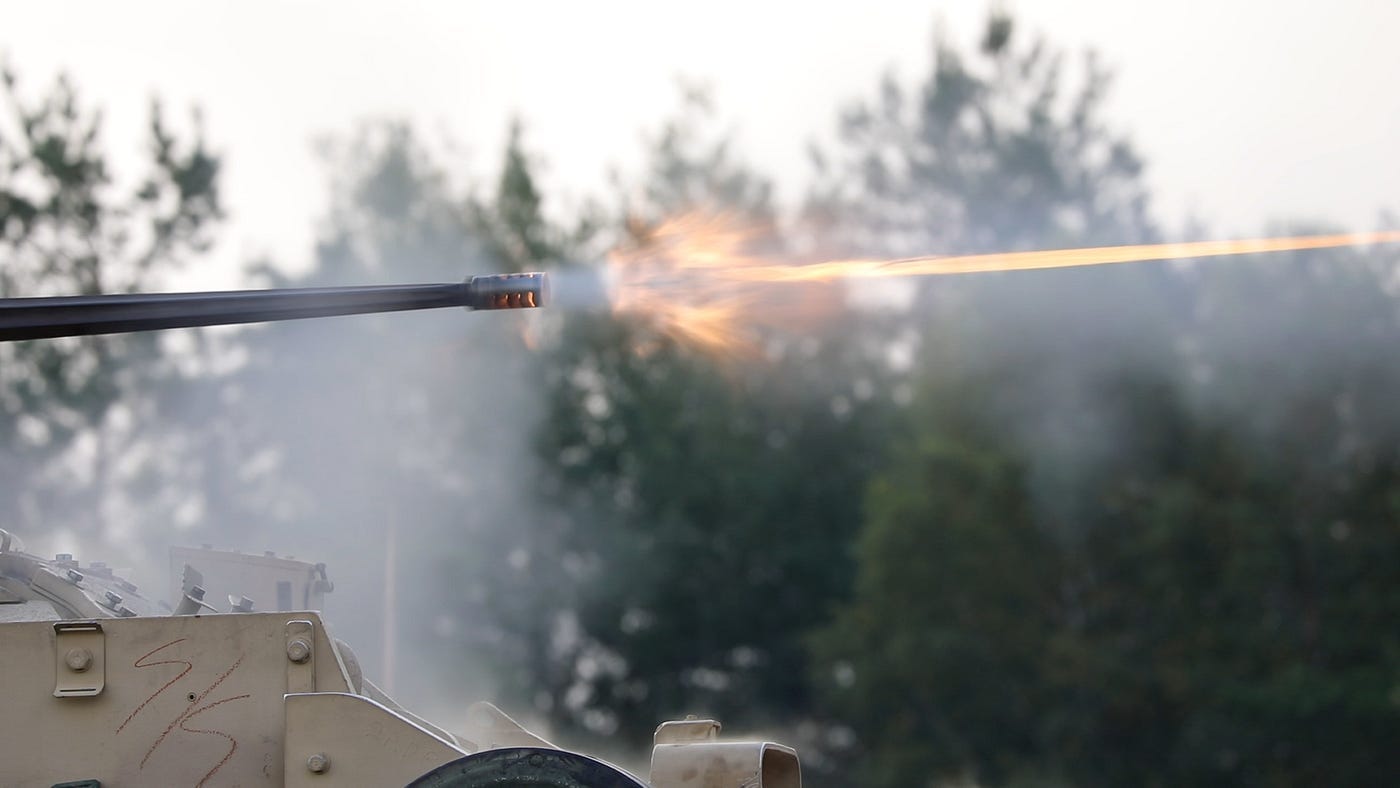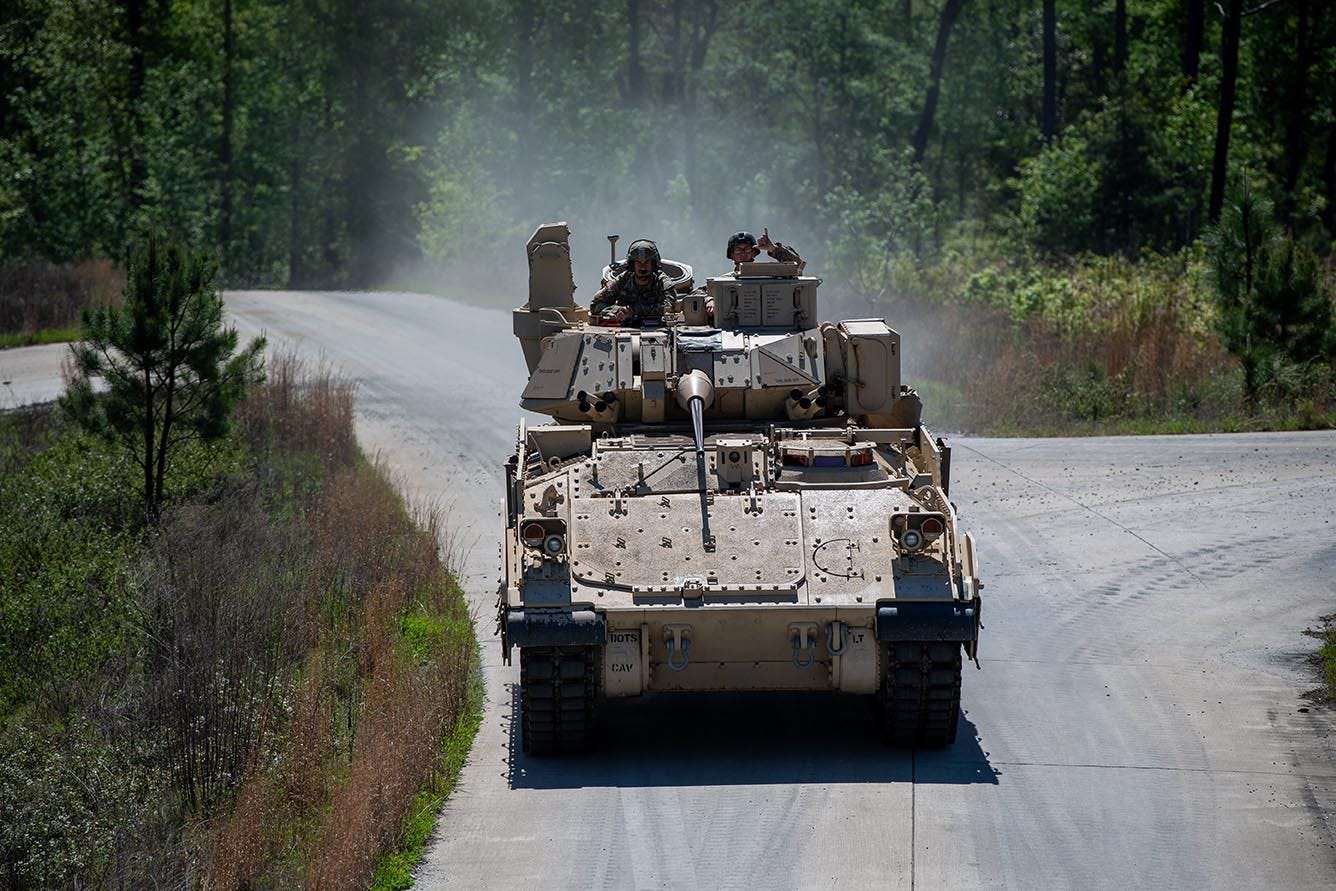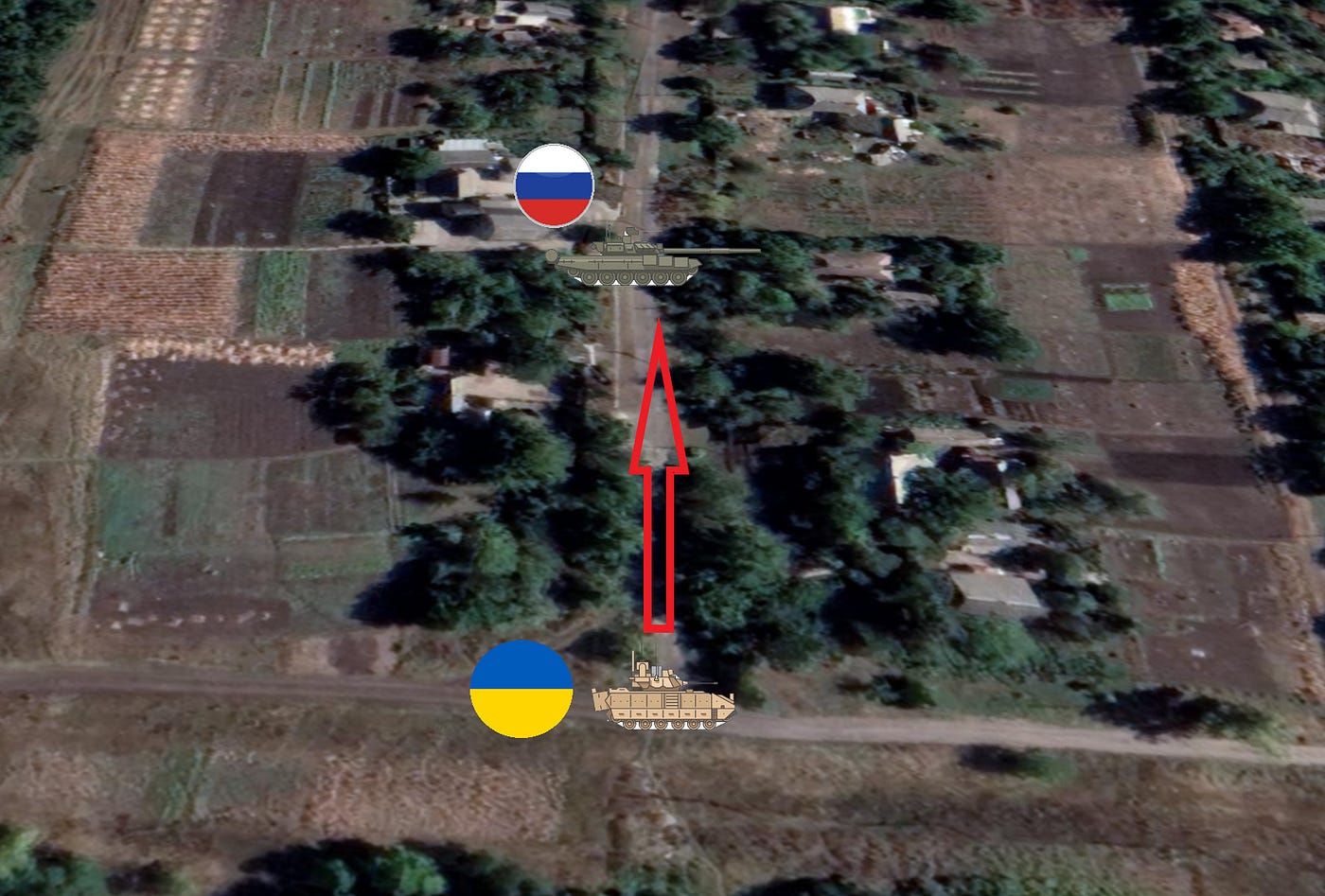Analyzing How a Ukrainian Bradley Destroyed an Advanced Russian T-90
Did I ever tell you the story of how a Bradley ran me over in the Army?
It was part of a training exercise in the infantry to teach us to keep calm and still perform our jobs in extreme conditions.
We were to let the Bradley, a stand-in for an enemy tank, roll over us (between the wide tracks obviously) and then pop up and shoot it in the rear armor with an AT-4 anti-tank rocket.
Since then, I’ve had a healthy respect for the Bradley, even though I was a light infantryman and never got the privilege to ride in one.
(Light infantry have to walk everywhere… Or jump from an airplane. Mechanized infantry get to ride around in style in the Bradley or Stryker).
On January 11th, 2024, near the city of Avdiivka, a video surfaced showing a pair of M2 Bradleys duking it out with Russia’s most advanced T-90M main battle tank.
And spoiler alert…
The Bradley won.
But wait! Isn’t the Bradley a lightly armored infantry fighting vehicle? And isn’t the T-90M one of Russia’s most advanced tanks?
Yes, and yes.
Here’s the video to get us started:
First, it’s not clear whether the Ukrainian Bradleys were actually hunting down the Russian tank, or if they just accidentally ran into each other.
The close-quarter engagement begins with the Russian 48-ton T90M inside of this small village, with the first Bradley initially engaging it from a 90° angle.
Then, both vehicles retreat away from each other.
The T90 then fires a 125mm shot that misses, hitting the ground just a few meters in front of itself.
When you’re operating a tank and trying to hit a nearby target, the challenge increases as you need to swivel the turret more quickly. Also, objects tend to zip through your field of vision at a faster rate the closer they are, making aiming a bitch.
The M2A2 Bradley’s turret is capable of completing a full 360-degree rotation in roughly 6 seconds, or about 60 degrees per second.
For Russia, there’s some variation in the reported traverse speed of the T90’s turret; however, the most frequently mentioned figure is around 9 seconds for a 360-degree rotation, or about 40 degrees per second.
In scenarios where these vehicles are merely 50 meters apart, turret speed becomes a critical factor.
During such a close-range encounter, the T90 was essentially on a countdown; it had a very narrow window to act before the Bradley could potentially disable its optics, rendering it blind.
This situation turned into a high-stakes race against time for both vehicles.
The T90 was limited to firing three shots from its cannon within the available timeframe. Equipped with a stabilized turret and an autoloader, the T90 is capable of engaging targets while on the move, achieving a firing rate of up to 8 rounds per minute.
In this instance, the T90 retreated from the road junction, discharging rounds indiscriminately through buildings.
Similarly, the Ukrainian Bradley started unleashing a barrage from its 25mm chain gun, firing numerous rounds as it accelerated down the road, distancing itself from the tank.
Next, the T90 deployed a smoke canister, a standard maneuver to obscure its location and interfere with the thermal imaging systems of the Bradley.
After the Russians deployed the smoke canister you can see a weird explosion.
It seems possible that the explosion observed might have been due to one of the T90’s explosive reactive armor units detonating simultaneously, or possibly a malfunction with the smoke grenade itself — the exact cause remains unclear.
At this juncture, the second Ukrainian M2 Bradley crew follows the path of the first, getting a visual on the Russian tank for the first time, and swiftly starts firing with their chain gun.
The T90 just eats up these direct frontal 25mm shots from the Bradley, and from our drone’s view, it looks like it’s just absorbing those shots.
Imagine yourself inside the T90 tank during such a moment; it’s hard to fathom the intensity and fear of the Russian crew. The noise would be overwhelming, akin to being inside a bell tower while a giant bell is struck repeatedly with a hammer.
The crew inside the Russian tank would likely have been severely disoriented by the impact of the explosions, despite the slim likelihood of penetration by the smaller caliber rounds.

It’s a reminder not to overlook the human aspect in these confrontations.
So how effective is the Bradley weapon against the tank?
The Bradley’s armament includes the M242 25mm Bushmaster chain gun, capable of firing up to 200 rounds per minute at its highest cyclic rate, which is the setting most often employed.
Within the turret, two ready boxes supply the linked ammunition to the gun, enabling the switching between two different ammunition types on the go.
These types include the M919 APDS (Armor-Piercing Discarding Sabot) tracer rounds, made of depleted uranium, and the M792 high-explosive incendiary tracer rounds.
The introduction of the M919 depleted uranium rounds to Ukraine’s arsenal sparked debate, mostly due to the radioactive nature of depleted uranium.
The Bradley’s 25mm cannon, with these rounds, can breach armor ranging from 30mm to 100mm thick, depending on the impact angle against the target.
Yet, the Russian T90’s armor is reported to range from 400mm to 900mm in thickness, based on publicly available data, (though actual figures may vary).
So, if those 25mm autocannon rounds were unable to penetrate the Russian armor, how did they immobilize the tank?
Various hypotheses exist in my intelligence circle, and I must clarify that I wasn’t present and so this is purely speculative. However, one plausible explanation could be the Bradleys’ success in neutralizing the optical systems of the Russian tank.
Both the commander and the gunner on the T90 tank rely on separate optical devices. Damaging these optics could render the crew virtually blind and significantly impair their combat capabilities.

While the 25mm rounds cannot pierce most of the T90 armor, it’s also possible they struck a weak point where the turret connects to the hull, which controls the tank’s turret rotation systems.
This might be why we see the turret spin wildly before crashing into a tree.
Still… While the hull and main turret are heavily armored on the T90, the sights are only somewhat protected and would be ineffective after only a couple of well-placed 25mm hits.
To me, this raises questions about what we’re doing to make sure our armored vehicles in the United States have sufficient redundant backup optics so they continue to fight even if the main cameras are damaged.
There are many unanswered questions I still have… like why wasn’t the TOW missile used on the Bradley?
In the first Gulf War, the Bradley’s TOW missile took out dozens of Russian T-72 tanks.
It’s possible that the Ukrainians simply didn’t have any loaded at the time. Or, perhaps they already expended their TOW munitions.
Infantry fighting vehicles (IFVs) serve mainly as support for infantry units on foot, offering armor protection sufficient to shield its occupants from minor threats such as small arms fire, artillery fragments, and occasional hits from weapons up to 30mm in caliber.
On the other hand, the Russian T90M stands as a quintessential main battle tank, outfitted with robust armor and a large caliber cannon, engineered for confrontations with opposing tanks.
Facing off against a non-tank adversary like an IFV, one would presume the T90 to have a distinct advantage.
However, this outcome suggests that external factors played a role in the T90’s defeat.
The T90 may have been isolated from its unit or perhaps lost its way — details that remain uncertain. Additional factors not visible in the footage could have influenced the outcome.
It’s possible that the T90 was conserving ammunition due to a shortage or was already compromised by previous artillery damage, affecting its effectiveness in this encounter.
It’s still an interesting encounter and may be the first time in history that a Bradley has destroyed Russia’s flagship main battle tank.
Слава Україні





You keep on using the word "destroy" despite the fact that your own narrative makes clear the T-90 was not destroyed. At most, the Ukes got a mobility kill. And the best explanation for not using the TOW is they've already used all the missiles we've sent. Could also be untrained crews, damaged launcher, previously expended, etc.
Depleted uranium shells are not radioactive.
DU may be a hazard if you were to ingest a tablespoon every day for a few years. You're falling for enviro-crackpipe propaganda regarding micro levels of radiation.